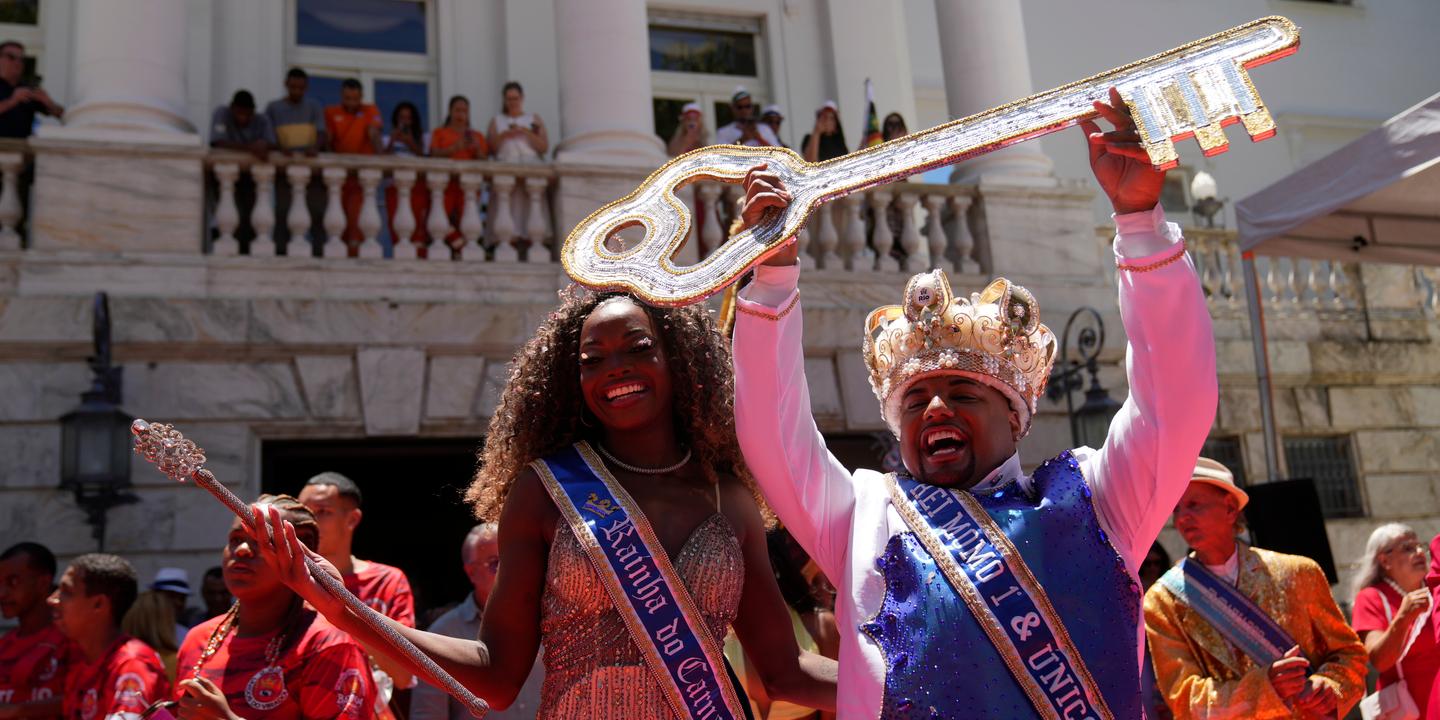
Rio Carnival Kicks Off with a Whirlwind of Festivities Across Brazil
The air crackles with anticipation, the drums beat with relentless energy, and the streets erupt in a kaleidoscope of color. The Rio Carnival, a spectacle unlike any other, has officially begun. This year, the five-day extravaganza promises a relentless assault on the senses, with hundreds of parties sprawling across the city and breathtaking parades filling the iconic Sambadrome.
The official commencement of the 2020 Rio Carnival, starting on Friday, February 28th, was marked by the symbolic handing over of the city keys to King Momo. This year, the honor was bestowed upon Kaio Mackenzie, a 28-year-old representative of the working-class community of Mangueira. King Momo, the jovial figurehead of the celebration, embodies the spirit of revelry and liberation that defines the Carnival. His reign, though temporary, signifies a shift in power, placing the focus squarely on joyous celebration and the temporary suspension of everyday worries.
For Marcos Souza, a samba dancer with the Arranco school, the Carnival is simply "the biggest party in the world." His sentiment echoes the feelings of millions of Brazilians and countless tourists who flock to Rio de Janeiro each year to witness the unparalleled spectacle. The highlight of the Carnival is undoubtedly the Samba School parades held at the Sambadrome. This purpose-built arena, capable of holding up to 80,000 spectators, becomes a stage for elaborate floats, stunning costumes, and the intoxicating rhythms of samba music.
Families from across Brazil and international visitors alike gather to witness the culmination of months of tireless preparation by the Samba Schools. Each school, representing a different neighborhood or community, competes for the coveted championship title. Their elaborate performances tell stories through music, dance, and visual spectacle, often reflecting Brazilian history, culture, and social issues. The energy is palpable as thousands of dancers, bedecked in shimmering costumes that catch the light, move with precision and passion, their movements perfectly synchronized with the pulsating beat of the bateria, the school’s percussion ensemble.
However, the Rio Carnival extends far beyond the confines of the Sambadrome. The streets of Rio de Janeiro transform into a vibrant playground, teeming with "blocos," street bands that lead processions of revelers through the city’s neighborhoods. These mobile parties, often free and open to all, offer a more spontaneous and accessible way to experience the Carnival spirit. Thousands of partygoers, dressed in costumes ranging from the elaborate to the whimsical, dance and sing along to the infectious music, creating a wave of joyous energy that sweeps through the streets.
From the iconic beaches of Copacabana and Ipanema to the historic streets of Santa Teresa, every corner of Rio vibrates with the sounds of samba, frevo, and other traditional Brazilian rhythms. Food stalls offer a tempting array of local delicacies, while vendors sell colorful souvenirs and trinkets. The atmosphere is one of uninhibited joy and camaraderie, where differences are set aside and everyone is united in the celebration of life.
While Rio de Janeiro is undeniably the epicenter of Carnival festivities, the spirit of celebration extends throughout Brazil. The Sao Paulo Carnival, while perhaps not as internationally renowned as its Rio counterpart, has been steadily gaining momentum in recent years. As the largest metropolis in Latin America, Sao Paulo offers a unique and vibrant Carnival experience.
"Our Carnival has grown a lot, both financially and in its ability to attract the public," affirms Junior Dentista, director of the Mocidade Alegre Samba School, a two-time champion of the Sao Paulo Carnival. His statement reflects the growing investment and dedication that has transformed the Sao Paulo Carnival into a major cultural event.
Sao Paulo’s Samba School parades, held at the Anhembi Sambadrome, showcase the talent and creativity of the city’s diverse communities. The street celebrations, while perhaps less extensive than those in Rio, offer a unique blend of traditional and contemporary influences. The city’s vibrant nightlife also contributes to the Carnival atmosphere, with numerous parties and events taking place throughout the five-day celebration.
The festivities in Sao Paulo continue until March 4th, while the revelry in Rio de Janeiro extends until March 8th, offering ample opportunity for both locals and visitors to immerse themselves in the vibrant energy of the Brazilian Carnival. From the grandeur of the Sambadrome parades to the spontaneous joy of the street blocos, the Carnival offers a diverse range of experiences to suit every taste.
Whether one is drawn to the meticulously choreographed performances of the Samba Schools, the infectious rhythms of the street bands, or simply the sheer energy of the crowds, the Brazilian Carnival is an unforgettable experience. It is a celebration of life, culture, and community that transcends borders and unites people from all walks of life in a shared moment of joyous revelry. The Rio Carnival and its nationwide counterparts stand as a testament to the Brazilian spirit: vibrant, passionate, and relentlessly celebratory. It is a reminder to embrace joy, to celebrate life, and to come together in a spirit of unity and festivity. The drums are beating, the costumes are shimmering, and the party is just getting started.
